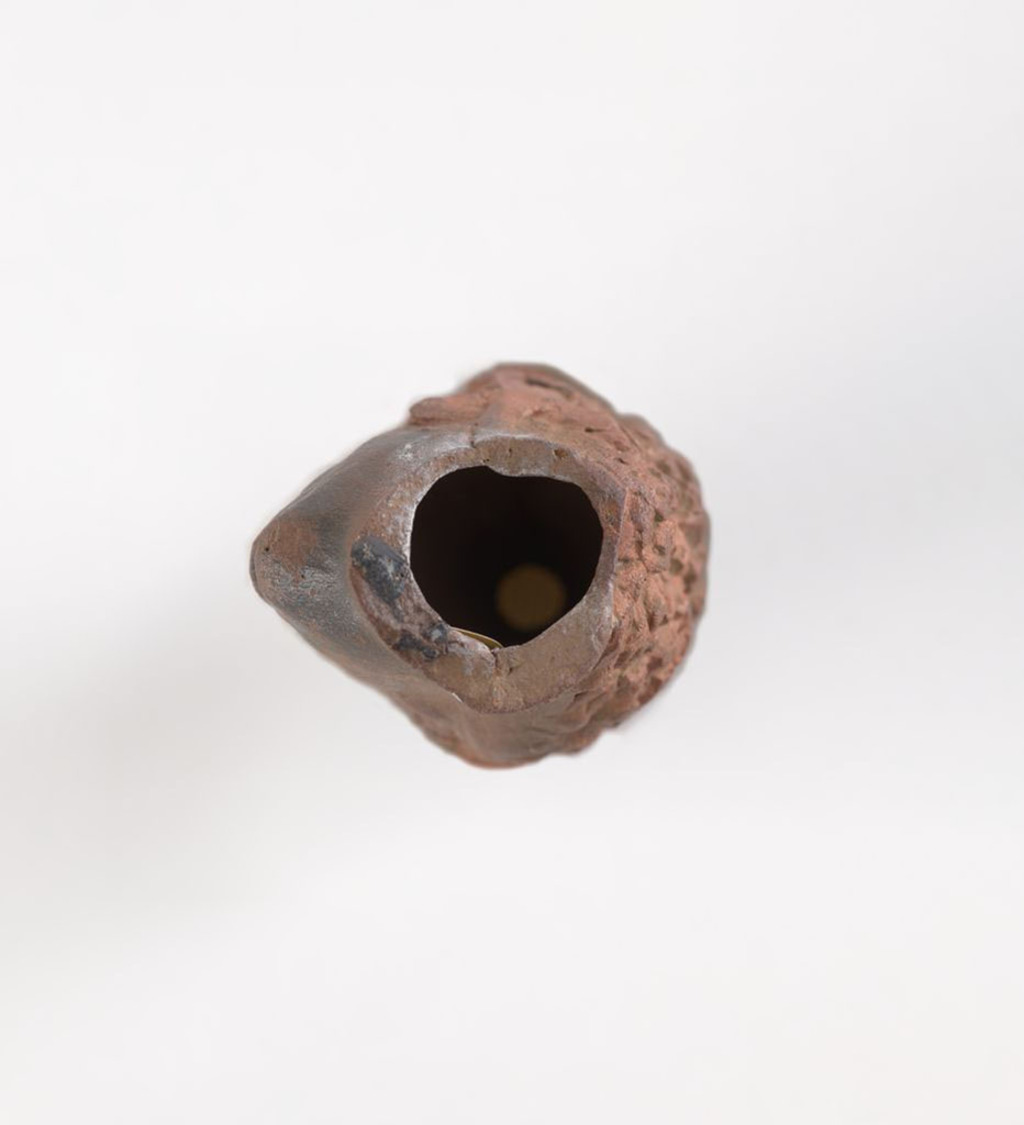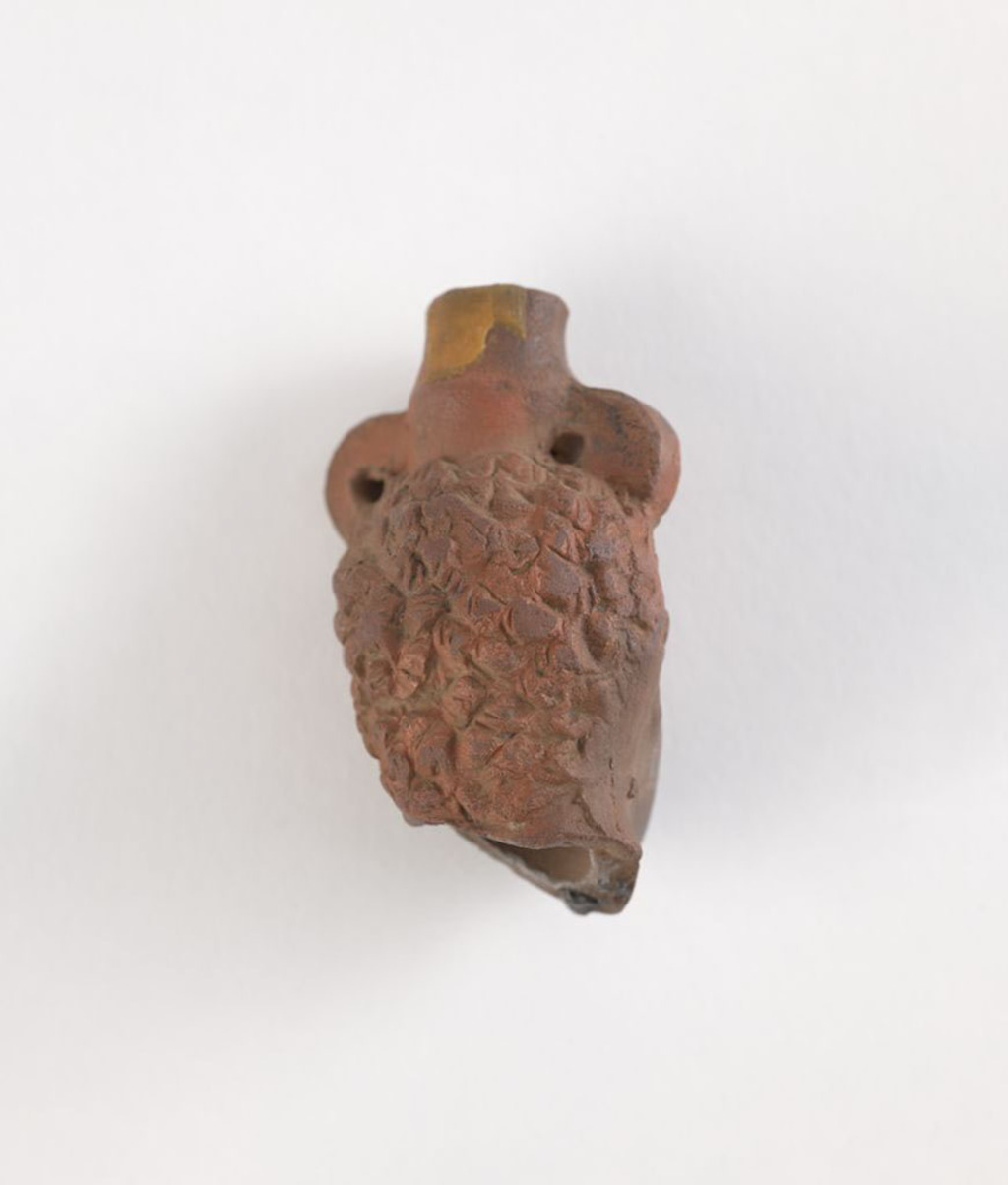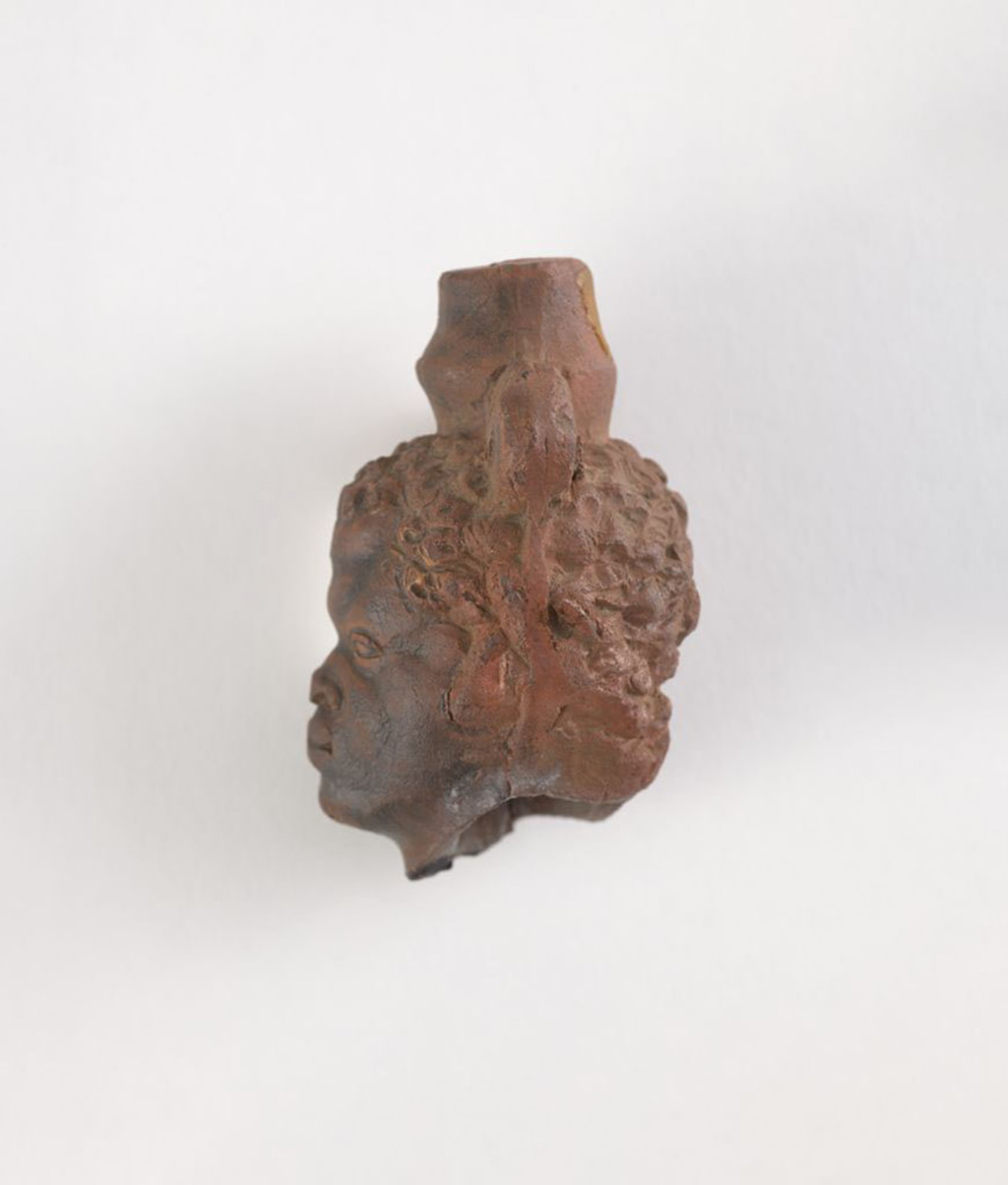This small vessel is known as a balsamarium and takes the form of a head, which is now broken off at the neck. It likely was meant to contain oil. The subject is a Black African male, specifically referred to by scholars as a Nubian. He has short curly hair and exaggerated facial features: a broad forehead, a wide, flat nose with flaring nostrils, and a thin-lined mouth that appears as if in a scowl. There is a deep crease between his widely set eyes.
On top his head there is a small vase that acts as the opening of the vessel. There are two pierced handles on either side of the vase (similar to another balsamarium in the Menil Collection, Y 105.01) that would have allowed for a strap to suspend the vessel. Balsamaria (plural of balsamarium) were popular in Egypt during the Hellenistic and Roman periods (particularly from 300 BCE to 300 CE). They were produced in terracotta, like this piece, but also in bronze and stone. The terracotta objects were made using two-part molds. Images of Black Africans were a specific collecting interest of the de Menils, which generated an ongoing research project called The Image of the Black in Western Art, now housed at Harvard University.
This vessel is one of several works in the Menil Collection that may represent an enslaved Black African in antiquity (some others include Y 108 and Y 105.01). Slavery was widespread across the ancient Mediterranean, although not limited to specific ethnicities or skin tones. Literary sources discuss war captives becoming slaves, but also a variety of other circumstances including debt or birth could lead to bondage. The exact meaning of the imagery of anthropomorphic vessels like this one is unknown, but it is possible that they were meant to act as a stand in for an enslaved person or as a status indicator of the vessel’s owner.







